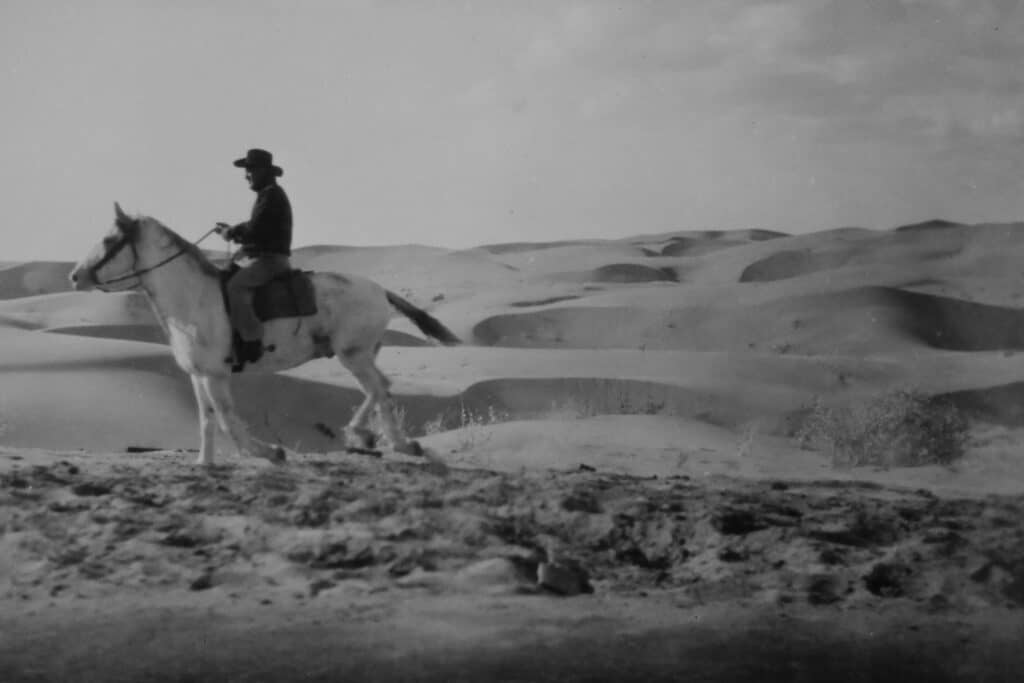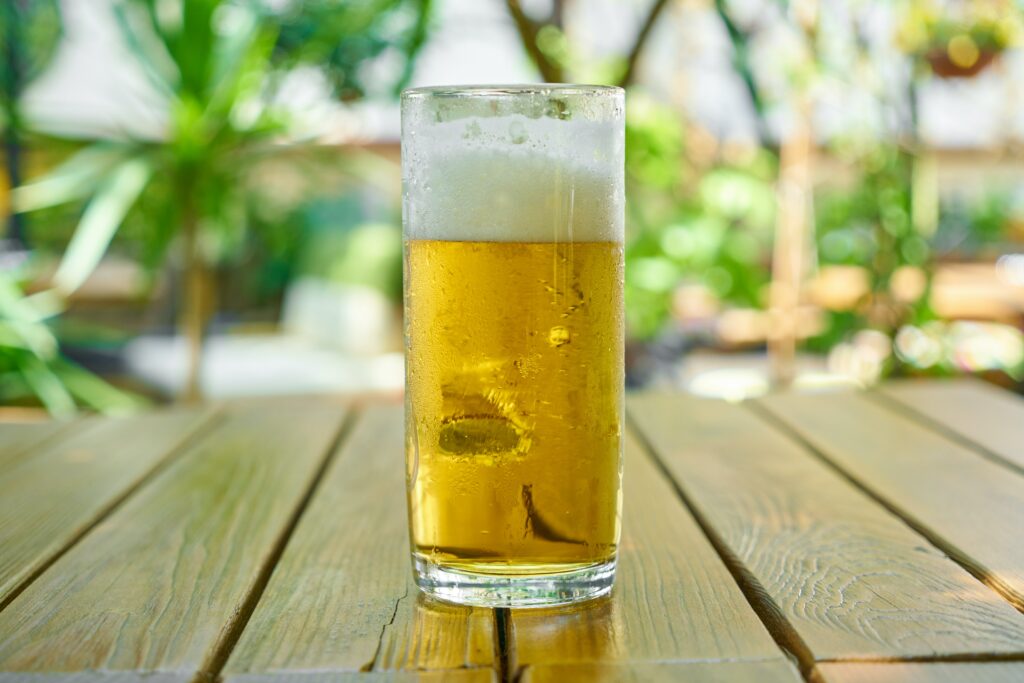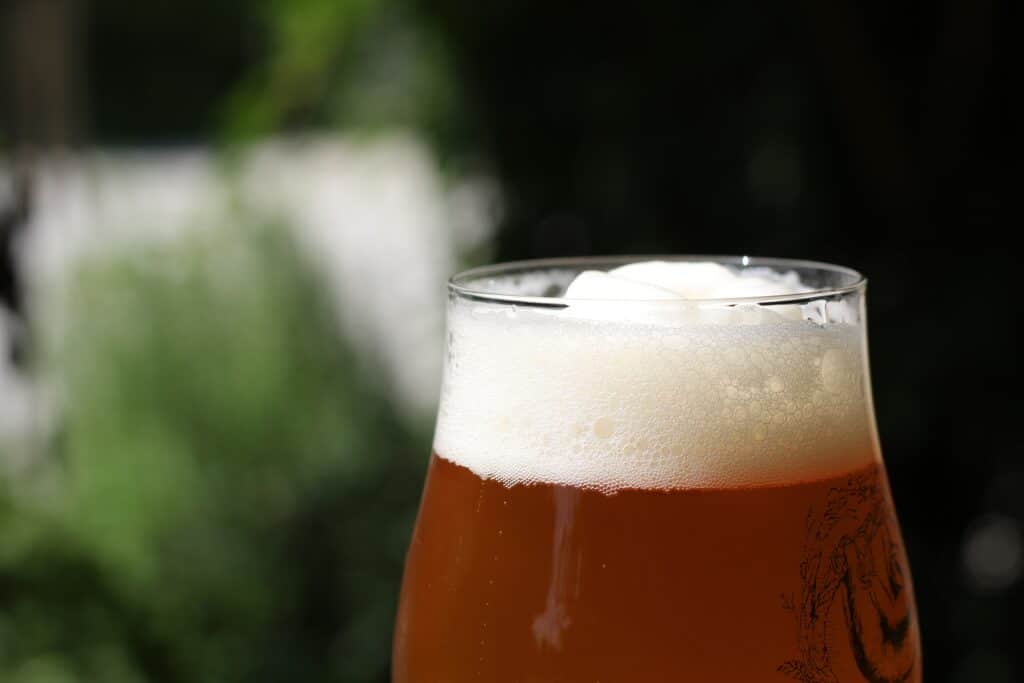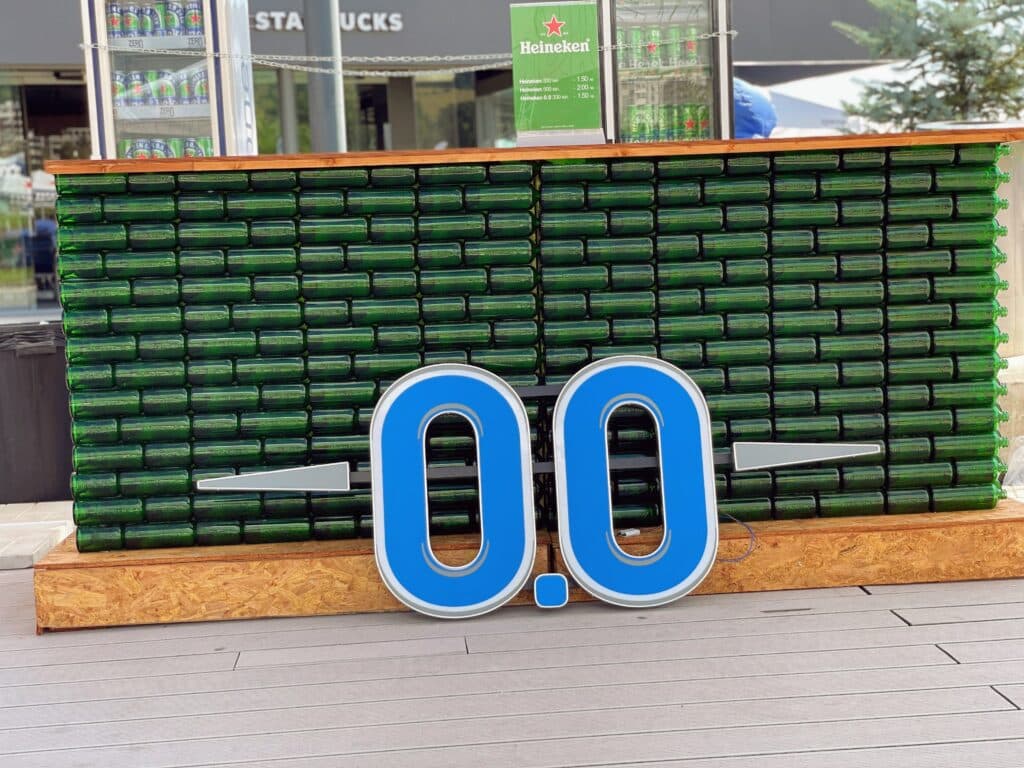Disclaimer: This post may contain affiliate links, from which I may earn a small commission at no extra cost to you. Thank you for supporting Ale Affair.
Imagine sunsets casting golden hues over vast canyons, the distant sounds of a honky-tonk piano, and the rich aroma of freshly brewed beer wafting through the bustling saloons. In the rugged landscapes of the Old West, a period generally defined from 1865 to 1895, beer was not merely a casual refreshment but a vital fragment of daily existence. A journey into this prosperous period uncovers the distinct place beer occupied in the societal fabric of that time. But did they drink beer in the Old West? Absolutely, it was a mainstay in their diet, a symbol of community and camaraderie. Giddy up your horses as we unravel the integral role of beer in the Old West, and like Marty and Doc, head to the old world where every pint holds a tale steeped in history.
The Resounding Legacy of Beer in the Old West
Embarking on a steam train journey to unearth the rich heritage of beer in the Old West, we find ourselves amidst vivid narratives that resonate well beyond the clinking of mugs in bustling saloons.
In an era of grit and relentless pursuit of survival, beer transformed from being a mere choice of beverage to a significant pillar of social gatherings and bonding. It echoed in the hearty laughter resonating within the wooden confines of the saloons and reverberated in the camaraderie formed amidst the drifting tunes of a lively honky-tonk piano.
Hardened cowboys would gather around a crackling fire under the vast star-studded skies, sharing tales of their adventures over mugs of rustic beer brewed with flavoursome local ingredients. The breweries of the time were not just establishments; they were bustling hubs where community spirit flourished, giving birth to recipes that would transcend generations.
Indeed, beer was more than a recreational choice; it was a safer alternative to water, often fraught with contaminants. The brewing process then was more straightforward yet energetic, with regional variations that bespoke the nuances of the western frontier. While Wild West saloons are often depicted as crime and debauchery hotbeds, they served as community gathering places where people could connect over a cold beer and share stories that would be passed down for generations.
As we holster our pistols and dive deeper into this captivating world, we invite you to join us in this exhilarating expedition. Let us uncover the secrets in the heart of old Western beer culture. This experience promises an exploration of taste and a fiery journey through a rich and textured history.
Prepare yourself to venture further as we uncover what beer tasted like in this golden era, a period rich with flavours and tales that still echo in the winds of the Wild West.
A Journey of Flavours: Unveiling What Beer Tasted Like in the Old West

So, now that we know the saloon floors were beer-spilt, we need to answer the question, “What did beer taste like in the Old West?” A sip from this bygone era offers a taste palette starkly different from the refined, crisp beers we know today. In the age of cowboys and uncharted territories, beer embraced a raw, unfiltered character that was nothing short of a reflection of the time itself.
The rustic world where beers brewed in the Old West carried a medley of flavours, owing to the simplicity of brewing techniques and the natural, locally sourced ingredients. The beers bore an authentic taste, a balanced blend of wild herbs and native grains, capturing the very essence of the West’s wild yet dynamic landscapes in each mug. There may also be a touch of bitterness from the raw, uncultivated hops and a slightly smoky finish, capturing the essence of open fires and expansive skies.
This was a time before the age of modern brewing science; thus, each batch of beer was a unique experience, marked by subtle variations and unexpected notes, offering a rich tapestry of sensory experiences.
Stepping inside a lively saloon, the golden liquid in glasses mirrored the earthy tones of the surrounding landscapes, reverberating with hints of untamed nature and whispers of wild adventures characteristic of the Old West. This was a time when the brewing process was as raw and untamed as the landscapes surrounding the bustling breweries, creating beverages that were robust, slightly cloudy, and brimming with character.
As we dive deeper into understanding what beer tasted like in the Old West, anticipate an exploration beyond mere flavours.
Chilling Tales: Was Beer Cold in the Old West and How Did They Keep It That Way?
Venturing further into the fascinating Wild West, a pair of intriguing questions beckon us: “Was beer cold in the Old West?” and, if so, “How did they keep beer cold in the Old West?” Let us cast away the modern comforts of refrigeration for a moment, immersing ourselves in the ingenious methods that were the norm during that period, an era where resourcefulness was the cornerstone of survival.
Indeed, beer was not cold in the way we perceive cold beer today. The Coors mountain certainly wouldn’t be glowing blue. However, the individuals of that era were not bereft of the joy of a cool brew. Through remarkable ingenuity, beer was often stored in cellars and basements, natural havens that provided a cooler respite from the harsh and warm surroundings. These underground storage areas naturally maintained lower temperatures, preserving the beer’s optimal state for consumption.
Some brewers even turned to nature’s own cooling system. Lagering caves, naturally occurring or man-made cellars dug deep into hillsides, became popular storage solutions. These cool, subterranean spaces were perfect for storing barrels of beer, keeping them at a consistent, cool temperature even during the hotter months. It wasn’t just about storage; these caves played a critical role in brewing, especially for lager beers requiring cooler fermentation temperatures. This ingenious use of available resources showcases the adaptability and resourcefulness of the people during this era, united in their quest for a refreshing, cool brew amidst the challenges of the Old West.
But how did they keep beer cold during the scorching summer months? The answer lies in the common seasonal ice harvesting during those times. In the winter, large blocks of ice were harvested from rivers and lakes and stored meticulously in ice houses for use throughout the year. This allowed for a cool sip and added a refreshing touch to the hearty and robust flavours of the Old Western beer.
Summary
In this journey, slightly different to West World, we’ve unearthed that they certainly enjoyed beer in the Old West. Venturing further, we found those old-timey beers had a robust, earthy flavour. As for keeping it cool, although not cold by today’s standards, beer was enjoyed at a cooler temperature, stored ingeniously in cellars or cooled with harvested ice blocks. So, while the Wild West was hard, brutal, and, in some cases, total anarchy, at least one could enjoy a (semi) cold beer. Next time you savour a cold one, you might find a newfound appreciation, sensing echoes of a bygone era in each sip.




